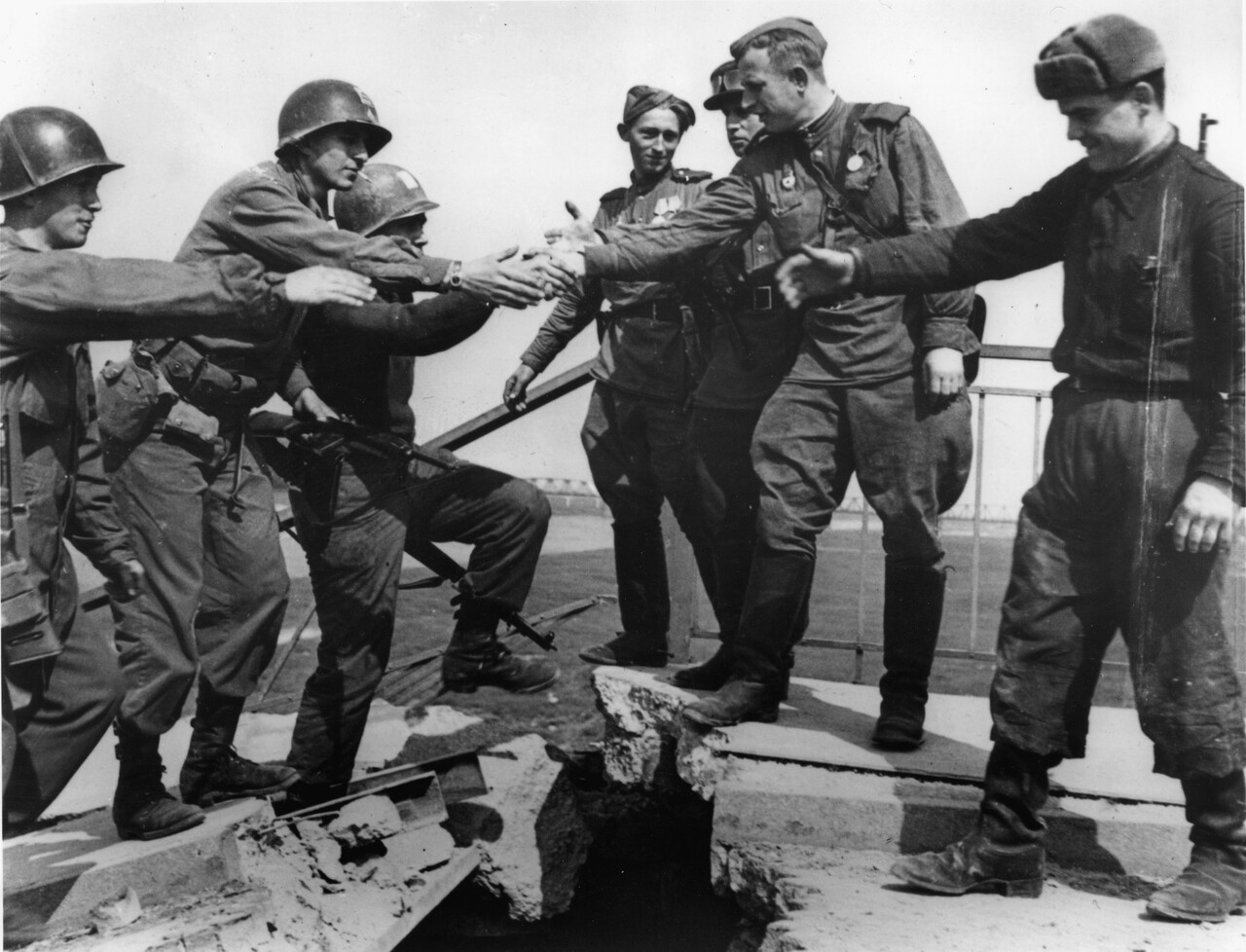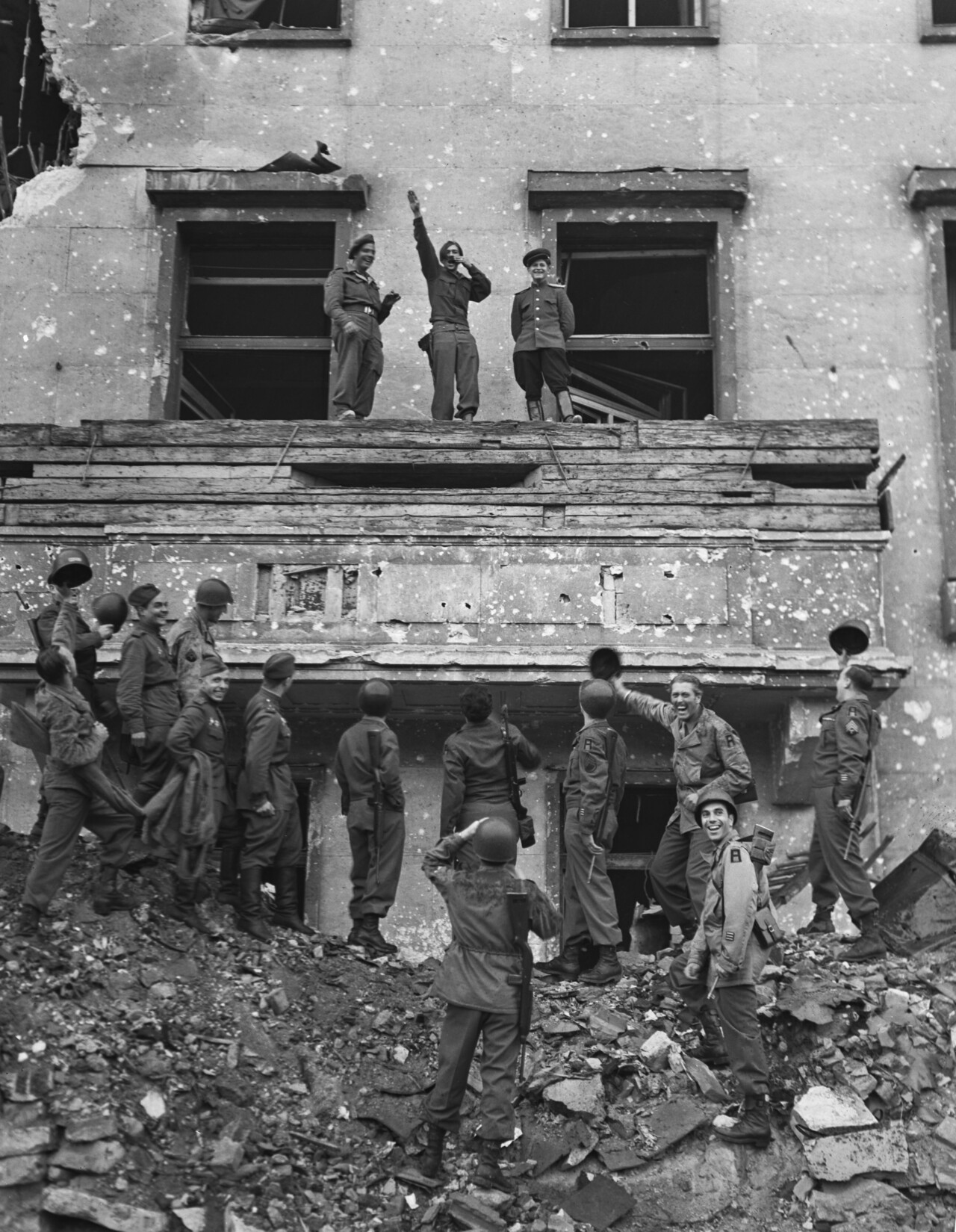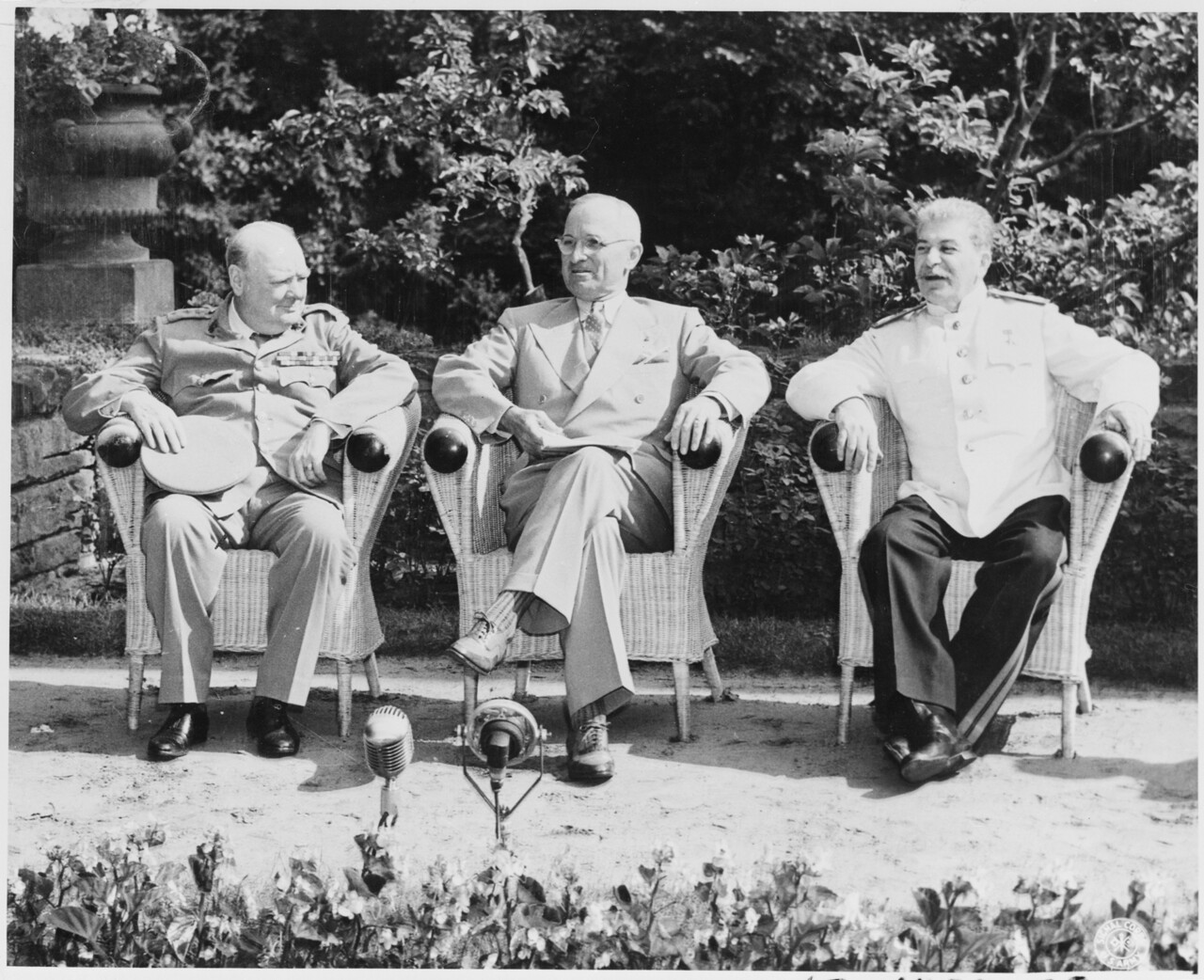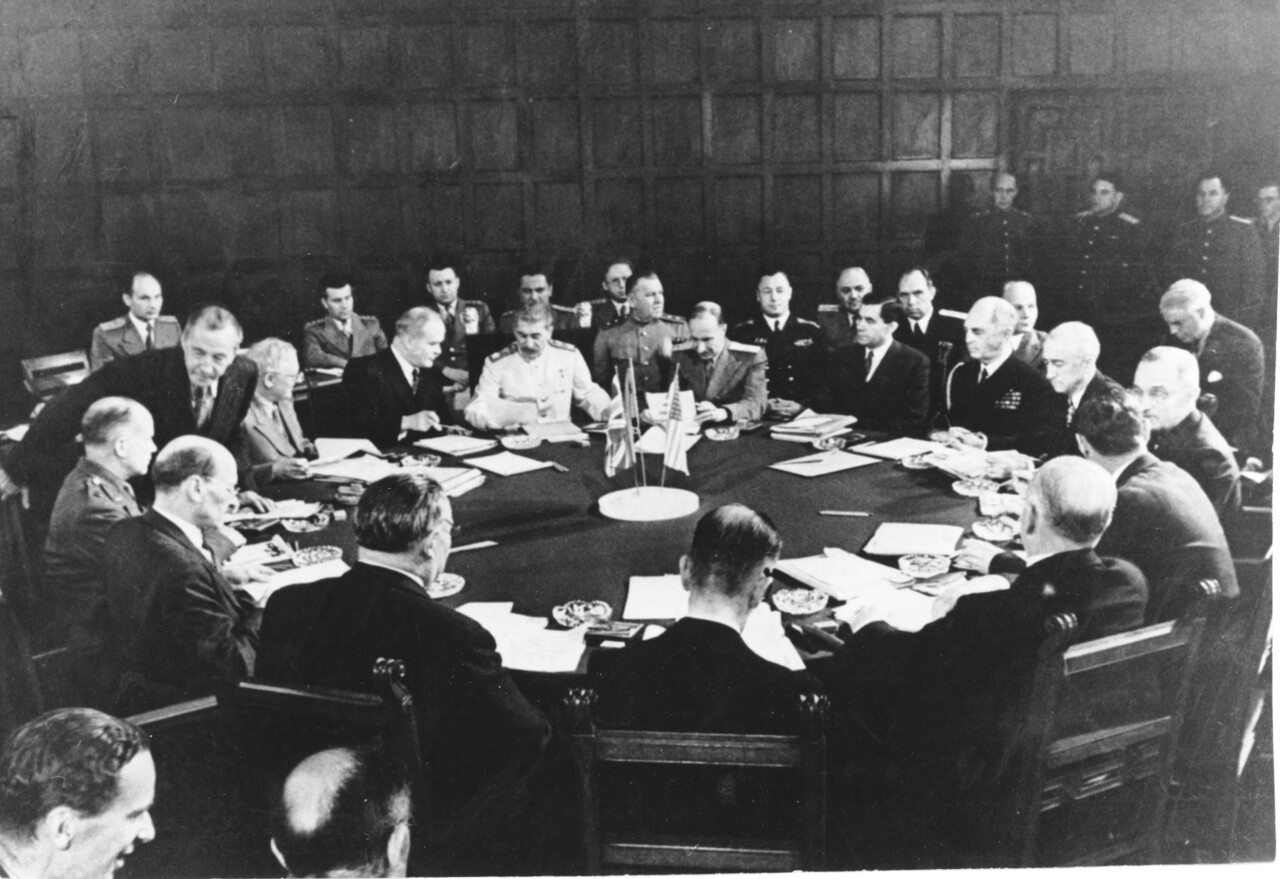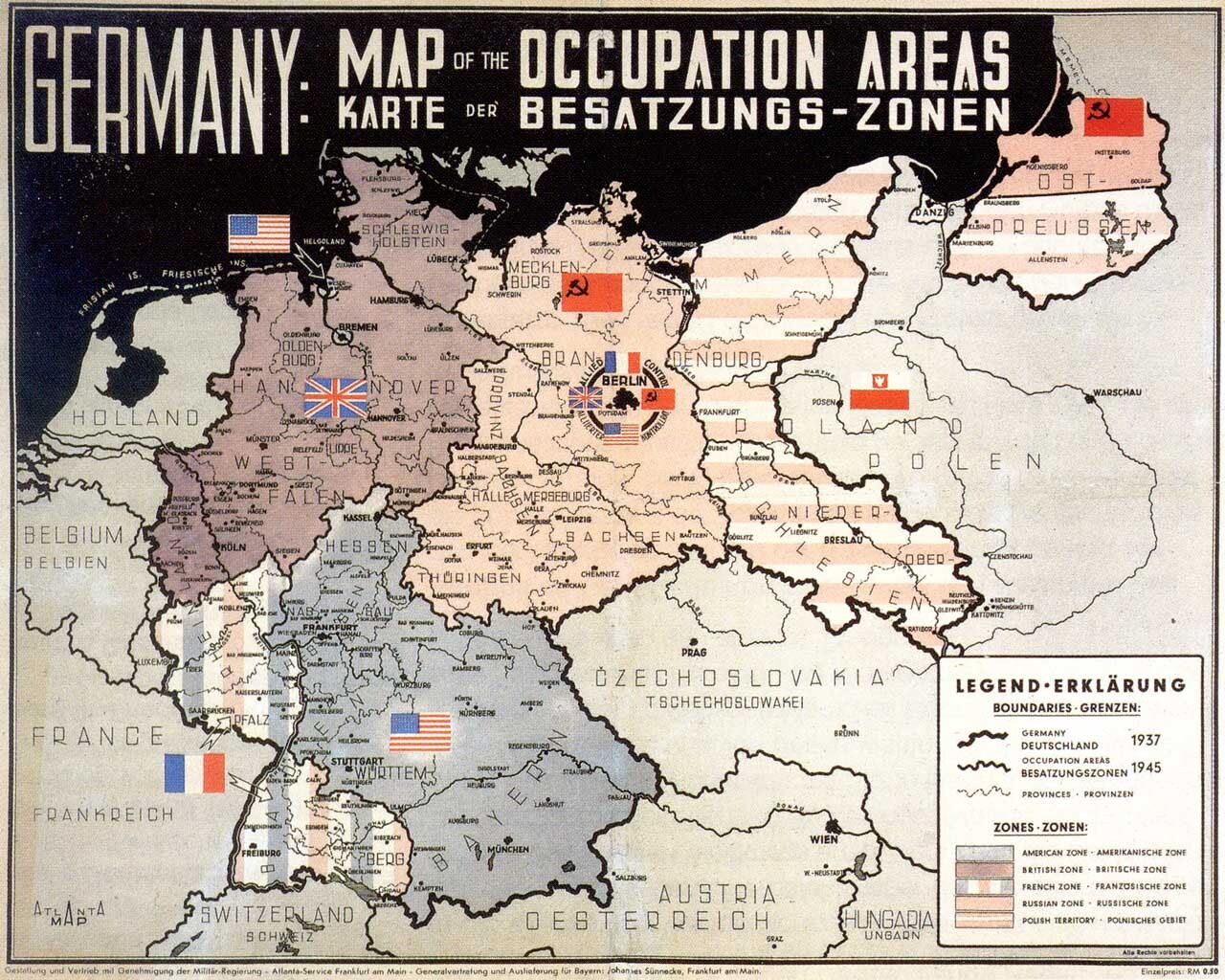The Potsdam Conference and the Division of Germany
After the end of the war, Germany is under the complete control of the victorious powers. From 17 July to 2 August 1945, the Allies of the anti-Hitler coalition meet at Cecilienhof Palace in Potsdam: the Soviet Union, the USA and Great Britain. The subject of the negotiations is the future borders in Eastern Europe, the administration of the occupied German Reich and the ongoing war in Asia. The main point of contention proved to be the determination of Poland's western border. The country finally receives the German territories east of the Oder and Neisse rivers – as compensation for the loss of its own territories in the east to the Soviet Union, which Stalin had already occupied in 1939 following his pact with Hitler. The »big Three« also agreed on the »orderly and humane transfer« of German »parts of the population« of Poland, Czechoslovakia and Hungary, which entailed the mostly violent expulsion of millions of civilians. Neighbourhood with Germans is no longer conceivable in these countries after the experiences of the war. The remaining territory of the German Reich is divided into four occupation zones, the former Reich capital into four sectors. However, the Allied alliance of convenience against National Socialism collapses and the Cold War begins. The division of Germany only ends with reunification on 3 October 1990 and the withdrawal of the Allies in 1994.
Torgau, 25 April 1945: US soldiers from the 58th Guards Rifle Division and Red Army soldiers from the 69th Infantry Division greet each other on the destroyed Elbe bridge. The gap between the eastern and western fronts is closed. The photographer Allan Jackson (1915 – 1995) has the scene re-enacted.
bpk, 2.00017047
Potsdam-Cecilienhof, 25 July 1945: The »big Three« – Prime Minister Winston Churchill (1874 – 1965) for the United Kingdom, President Harry S. Truman (1884 – 1972) for the USA and Chairman of the Council of People's Commissars Josef Stalin (1878 – 1953) for the Soviet Union – at the start of the conference.
public domain, Wikipedia
